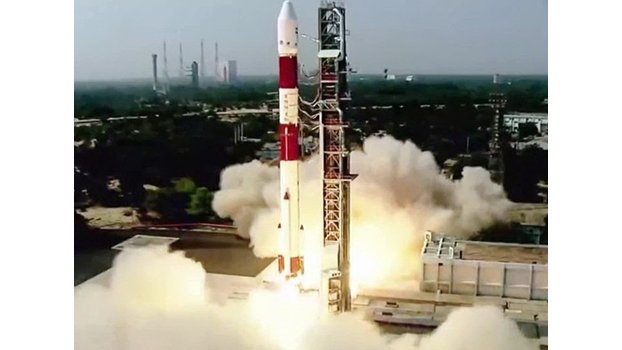India marks a brilliant tradition in science
Narendra Modi wants Indian science to be open, accessible, as well as culturally rooted


India observes February 28 as National Science Day. It commemorates C V Raman’s discovery of the scattering of light, later named as the Raman effect after him.
For this he received the Nobel Prize in Physics in 1930, the first Asian to win it in science. We may remember that the first Asian to be awarded any Nobel Prize was also an Indian, Rabindranath Tagore, who won it for Literature in 1913.
Born in Tiruchirapalli, Tamil Nadu in 1888, Raman showed signs of precocity and genius from childhood. He passed his matriculation at the age of 11, graduated from Presidency College, Madras, at 16, obtained his Masters in another two years, and, in 1917, before he was 30, became the first Palit Professor of Physics at the Rajabazar Science College, University of Calcutta.
In 1921, Returning from the International Universities Congress in London on the SS Narkunda, he began to wonder why the Mediterranean was such a lovely and deep blue when ordinary water in a glass was colourless. Was it the same reason that the sky is also blue? With a simple telescope and prism that he had with him, he worked out the hypothesis of inelastic scattering of photons by the water.
The sea was blue not because it reflected the blue sky, as previously thought, but because it scattered more blue than other colours. On docking in Bombay after his 15-day sea trip, he immediately sent a paper to Nature, still the leading science journal in the world.
This year’s theme for National Science day is “Future of STI: Impacts on Education, Skills and Work”. It was on the related theme of “Science, Technology and Innovation in India” that Dr K. Vijayraghavan, the Principal Scientific Advisor (PSA) to the Government of India, spoke in the “Distinguished Lecture Series” of the Indian Institute of Advanced Study, Shimla, of which I am the Director.
A pro-science government Vijayraghavan stressed how Prime Minister Narendra Modi wants Indian science to be open, accessible, as well as culturally rooted and responsive to the needs of the common people. Science is not a vertical, Professor Ashutosh Sharma, Secretary, Department of Science & Technology, who introduced the PSA, observed. Rather, it is a horizontal which affects all other verticals of society, with the capacity to enhance them.
The position of the PSA has been crucial to new India. Earlier PSAs were Dr. APJ Abdul Kalam, who went on to become the 11th President of India from 2002-2007, and Dr. R. Chidambaram, who played an instrumental role in India’s nuclear programmes, Pokhran I and II.
This year’s National Science Day was celebrated with a bang, as it were, with the Indian Space Research Organisation’s (ISRO’s) successful launch from the Sriharikota spaceport of PSLV-C51 carrying a payload of Brazil’s Amazonia-1 and 18 other satellites. This is Polar Satellite Launch Vehicle’s (PSLV) 53rd mission and ISRO’s first launch in 2021.
For the first time a satellite designed and produced in Brazil was put into orbit in space by India. Amazonia-1 is a 637-kg optical earth observation satellite of Brazil’s National Institute for Space Research (INPE).
To mark the occasion, Prime Minister Modi congratulated his Brazilian counterpart, Jair Bolsonaro, with a Portuguese tweet: ‘Parabens! Excelência @jairbolsonaro pelo sucesso do lançamento do satélite Amazônia-1 do Brasil por PSLV-C51 de @isro. Este é um momento histórico em nossa cooperação espacial e meus melhores votos para muitos outros empreendimentos como esse no futuro.’
An English translation followed: “Congratulations President @jairbolsonaro on the successful launch of Brazil’s Amazonia-1 satellite by PSLV-C51. This is a historic moment in our space cooperation and my felicitations to the scientists of Brazil. @isro” (12:56pm 28 Feb 2021·Twitter Web App).
On the topic of India’s accomplishments in science, particularly space research, the remarkable contribution of Dr Swati Mohan has been widely hailed. Instantly recognised the world over as the scientist with the little bindi (auspicious dot on the forehead), the Bengaluru-born scientist at National Aeronautics and Space Administration (Nasa), US, played a key role in landing Nasa Rover on Mars.
Her terse announcement on February 18, “Touchdown confirmed! Perseverance is safely on the surface of Mars, ready to begin seeking the signs of past life!” made international headlines and highlighted the role of women in world science.
Science education in India, however, is in quite a bad shape, especially when it comes to the millions of ill-trained BSCs that the thousands of colleges and universities scattered across the country churn out. It is hoped that the newly notified National Education Policy (NEP) will give the much-needed “vaccination” to Indian science, especially in schools and colleges.
Else, as Dr Vijayaraghavan observed, science in India will remain very much a salt-and-pepper combination, with the pepper standing for the hard and indissoluble elite centres of excellence, but the salt running awash without the pepper really blending with it. What we need, instead, is a curry-powder model in which Science and Technology are integrated in all walks of life and areas of human endeavour in India.
I cannot help but conclude with a snippet for all those who couldn’t graduate during this Covid-19 pandemic. My alma mater, the University of Delhi (DU), awarded “digital degrees” to nearly 180,000 students in its 97th convocation on 27 February.
Except for 600 PhD degrees awarded by the Education Minister, Dr Ramesh Pokhriyal Nishank in person, all the others were conferred by a click of the computer. This was a first for DU, but several Indian Institute of Technology (IITs) already began this trend last year.
Makarand R. Paranjape is Director, Indian Institute of Advanced Study.
Source: Gulf News



